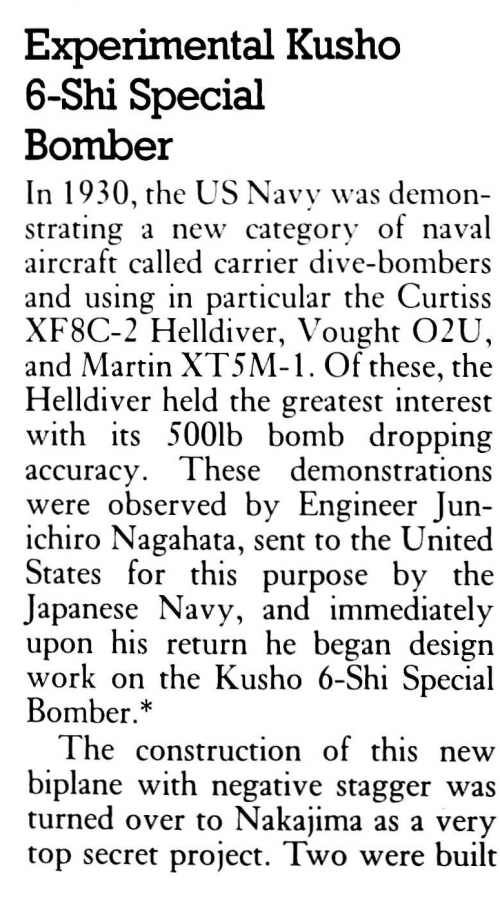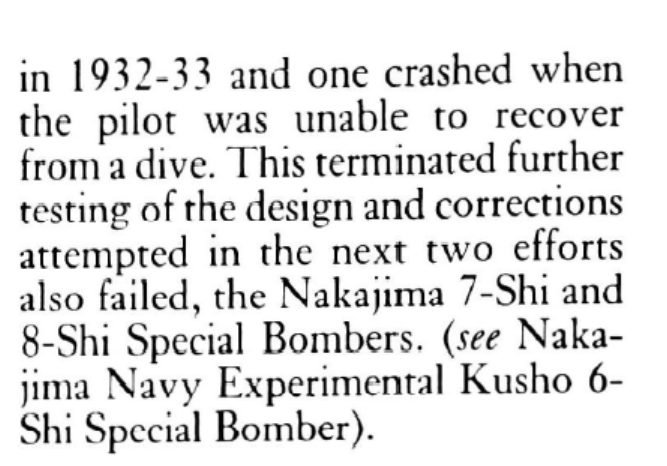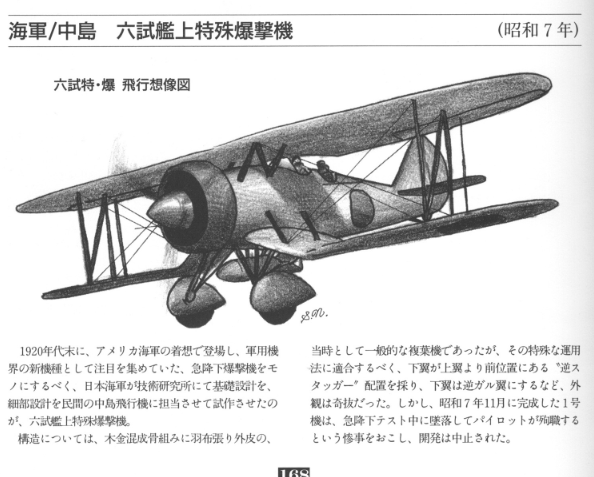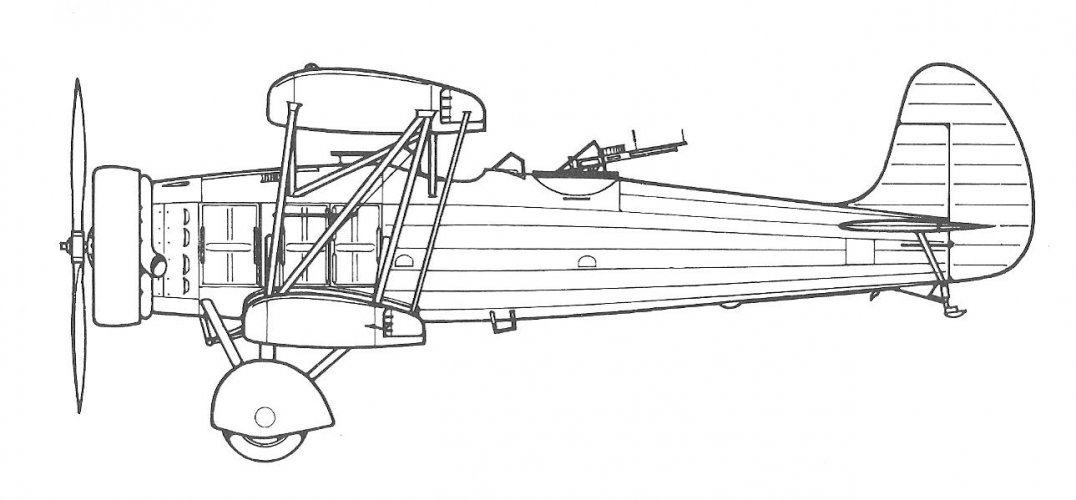You are using an out of date browser. It may not display this or other websites correctly.
You should upgrade or use an alternative browser.
You should upgrade or use an alternative browser.
Kaigun Koku-Sho („Kugisho“) / Yokosuka Naval Air Arsenal Prototypes & Projects
- Thread starter hesham
- Start date
tom!
ACCESS: Confidential
Following Mikesh/Abe´s "Japanese Aircraft 1910 - 1940":Hi,
what was Yokosuka Ku-Sho carrier bomber biplane,powered by single engine ?
"Kusho" was an acronym for Kaigun Koku-Sho = Naval Air Arsenal. It was used for the Yokosuka Naval Air Arsenal aircraft projects from 1932 until 1939.
During this period there were at least three single- engined biplane bomber projects started by the Naval Air Arsenal:
- 6-Shi Special Bomber (unsuccessfull)
- 8-Shi Special Bomber (D2Y1)
- Navy Type 92 Carrier Attack Aircraft (B3Y1)
(Special Bomber = dive bomber)
Yours
tom!
- Joined
- 25 June 2009
- Messages
- 14,752
- Reaction score
- 6,141
what was Yokosuka Ku-Sho carrier bomber biplane,powered by single engine ?
There are four different names that correspond to the same entity: Kusho, Kugisho, Yokosho and Yokosuka. The latter is the best known of the four because it is the one that was used during WW2."Kusho" was an acronym for Kaigun Koku-Sho = Naval Air Arsenal. It was used for the Yokosuka Naval Air Arsenal aircraft projects from 1932 until 1939.
- Joined
- 26 May 2006
- Messages
- 34,894
- Reaction score
- 15,758
what was Yokosuka Ku-Sho carrier bomber biplane,powered by single engine ?
Of course I know all of this,and many thanks,but I asked about aircraft
prototype,and I found it in the book, Japanese Aircraft 1910-1941.
Attachments
- Joined
- 6 November 2010
- Messages
- 5,263
- Reaction score
- 5,514
@hesham As described in your first image 20.png, the construction of the Kusho 6-Shi Special Bomber was handed to Nakajima.
In the Navy aircraft built by Nakajima chapter of Mikesh/Abe´s "Japanese Aircraft 1910 - 1940", page 229, there is a description with a side view line drawing of the aircraft, and some technical details.
Two prototypes built, one crashed.
In the Navy aircraft built by Nakajima chapter of Mikesh/Abe´s "Japanese Aircraft 1910 - 1940", page 229, there is a description with a side view line drawing of the aircraft, and some technical details.
Two prototypes built, one crashed.
For security purposes, the term 'dive-bomber' was not used, but instead it was described as a 'Special Bomber'.
blackkite
Don't laugh, don't cry, don't even curse, but.....
- Joined
- 31 May 2007
- Messages
- 8,819
- Reaction score
- 7,716
Hi!

 forum.warthunder.com
forum.warthunder.com

Experimental 7-Shi Special Bomber pictures needed
I assume they scrubbed these planes from all records considering how bad they were lol. It’s very likely the 6-Shi/7-Shi/8-Shi looked similar, the 7-Shi was basically a 6-Shi without staggered wings in terms of visual differences. 6-Shi for example: Yes, I know it’s wikipedia but the...
 forum.warthunder.com
forum.warthunder.com
Attachments
blackkite
Don't laugh, don't cry, don't even curse, but.....
- Joined
- 31 May 2007
- Messages
- 8,819
- Reaction score
- 7,716
The 6-shi special bomber was a dive bomber prototype by the Imperial Japanese Navy.
In 1930 (Showa 5), the Navy sent Engineer Junichiro Nagahata of the Naval Technical Research Institute's Aircraft Department to the United States to collect information on dive bombers, including the Curtiss SBC. After Nagahata returned to Japan, the Naval Air Arsenal (Naval Air Arsenal) developed the 6-shi special bombet to research dive bombers that could be carried by ships, and Nagahata was the chief designer of the basic design.
The manufacture of the aircraft was ordered from Nakajima Aircraft in 1931 (Showa 6). Nakajima's Engineer Ryozo Yamamoto and others were responsible for the detailed design and construction of the actual aircraft, and both the first and second prototypes were completed in 1932 (Showa 7). After the test flight on September 2nd of the same year, the Navy continued to research dive bombing until the following year, 1933, and identified areas that needed improvement, such as maneuverability, longitudinal stability, and insufficient aircraft strength.
The aircraft was a biplane with a composite wood and metal frame and fabric covering, similar in structure to the Bristol Bulldog, and had fixed landing gear. In order to align the center of gravity and center of drag during a dive and increase stability, special wing shapes and wing arrangements were adopted, such as an inverted staggered wing with the lower wing positioned forward of the upper wing, and an inverted gull wing for the lower wing, but these were not effective.
The aircraft was officially treated as a "special training aircraft," and the name "6-shi special" was given by those involved in the development
In 1930 (Showa 5), the Navy sent Engineer Junichiro Nagahata of the Naval Technical Research Institute's Aircraft Department to the United States to collect information on dive bombers, including the Curtiss SBC. After Nagahata returned to Japan, the Naval Air Arsenal (Naval Air Arsenal) developed the 6-shi special bombet to research dive bombers that could be carried by ships, and Nagahata was the chief designer of the basic design.
The manufacture of the aircraft was ordered from Nakajima Aircraft in 1931 (Showa 6). Nakajima's Engineer Ryozo Yamamoto and others were responsible for the detailed design and construction of the actual aircraft, and both the first and second prototypes were completed in 1932 (Showa 7). After the test flight on September 2nd of the same year, the Navy continued to research dive bombing until the following year, 1933, and identified areas that needed improvement, such as maneuverability, longitudinal stability, and insufficient aircraft strength.
The aircraft was a biplane with a composite wood and metal frame and fabric covering, similar in structure to the Bristol Bulldog, and had fixed landing gear. In order to align the center of gravity and center of drag during a dive and increase stability, special wing shapes and wing arrangements were adopted, such as an inverted staggered wing with the lower wing positioned forward of the upper wing, and an inverted gull wing for the lower wing, but these were not effective.
The aircraft was officially treated as a "special training aircraft," and the name "6-shi special" was given by those involved in the development
blackkite
Don't laugh, don't cry, don't even curse, but.....
- Joined
- 31 May 2007
- Messages
- 8,819
- Reaction score
- 7,716
The 7-Shi Special Bomber
Following the 6-shi Special Bomber, the same core members of the Air Arsenal and Nakajima developed the 7-Shi Special Bomber, which was an improvement on the design of the 6-shi Special Bomber, such as changing the engine and abandoning the use of the inverted staggered wings. This aircraft is also called the 7-Shi Special Bomber.
One prototype of the 7-Shi Special Bomber was completed in November 1932 and was inspected by the Navy, but on November 26 of that year, it crashed during a dive test at Nakajima, killing the test pilot, First Class Fujimaki Tsuneo. This led to the inspection being discontinued. It was later determined that there was room for further research, and development of the eighth special bomber was started.
There are also erroneous documents that claim that the crash of this aircraft was caused by the Rokushi Special Bomber.
Following the 6-shi Special Bomber, the same core members of the Air Arsenal and Nakajima developed the 7-Shi Special Bomber, which was an improvement on the design of the 6-shi Special Bomber, such as changing the engine and abandoning the use of the inverted staggered wings. This aircraft is also called the 7-Shi Special Bomber.
One prototype of the 7-Shi Special Bomber was completed in November 1932 and was inspected by the Navy, but on November 26 of that year, it crashed during a dive test at Nakajima, killing the test pilot, First Class Fujimaki Tsuneo. This led to the inspection being discontinued. It was later determined that there was room for further research, and development of the eighth special bomber was started.
There are also erroneous documents that claim that the crash of this aircraft was caused by the Rokushi Special Bomber.
blackkite
Don't laugh, don't cry, don't even curse, but.....
- Joined
- 31 May 2007
- Messages
- 8,819
- Reaction score
- 7,716
Specifications (estimated values)
6-shi Special Bomb
Length: 8.20 m
Width: 11.00 m
Height: 3.20 m
Wing area: 32.0 m2
Weight: 1,500 kg
Total weight: 2,300 kg
Engine: Nakajima Kotobuki Type 2 air-cooled radial 9-cylinder (maximum 580 hp) x 1
Maximum speed: 240.8 km/h
Practical ceiling: 6,500 m
Range: 833 km
Armament:
7.7 mm fixed machine gun x 1
7.7 mm rotating machine gun x 1
250 kg bomb x 1
Crew: 2
7-shi Special Bomb
Length: 8.50 m
Width: 11.00 m
Height: 3.50 m
Wing area: 30.0 m2
Weight: 1,500 kg
Total weight: 2,300 kg
Engine: Nakajima Kotobuki Type 2 Kai I Air-cooled 9-cylinder radial engine (maximum 580 hp) x 1
Maximum speed: 241 km/h
Practical ceiling: 6,500 m
Range: 740 km
Armament:
7.7 mm fixed machine gun x 1
7.7 mm rotating machine gun x 1
250 kg bomb x 1
Crew: 2
6-shi Special Bomb
Length: 8.20 m
Width: 11.00 m
Height: 3.20 m
Wing area: 32.0 m2
Weight: 1,500 kg
Total weight: 2,300 kg
Engine: Nakajima Kotobuki Type 2 air-cooled radial 9-cylinder (maximum 580 hp) x 1
Maximum speed: 240.8 km/h
Practical ceiling: 6,500 m
Range: 833 km
Armament:
7.7 mm fixed machine gun x 1
7.7 mm rotating machine gun x 1
250 kg bomb x 1
Crew: 2
7-shi Special Bomb
Length: 8.50 m
Width: 11.00 m
Height: 3.50 m
Wing area: 30.0 m2
Weight: 1,500 kg
Total weight: 2,300 kg
Engine: Nakajima Kotobuki Type 2 Kai I Air-cooled 9-cylinder radial engine (maximum 580 hp) x 1
Maximum speed: 241 km/h
Practical ceiling: 6,500 m
Range: 740 km
Armament:
7.7 mm fixed machine gun x 1
7.7 mm rotating machine gun x 1
250 kg bomb x 1
Crew: 2
- Joined
- 6 November 2010
- Messages
- 5,263
- Reaction score
- 5,514
Second image is from Japanese Aircraft 1910 - 1940 by Robert Mikesh & Shorzoe Abe, Putnam 1990, page 229.
Similar threads
-
Yokosuka (Yokosho/Yosho, Kugisho/Kusho) related topics on this forum
- Started by Stargazer
- Replies: 0
-
Yokosuka (Kugisho) high-speed long-range carrier-based dive bomber
- Started by blackkite
- Replies: 7
-
Yokosuka (Kugisho) MXY4 Type 1 Target Plane
- Started by hesham
- Replies: 6
-
Yokosuka P1Y Ginga ("Frances") Variants and Projects
- Started by hesham
- Replies: 86
-




